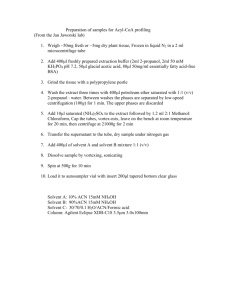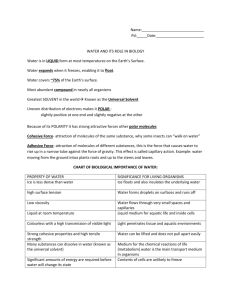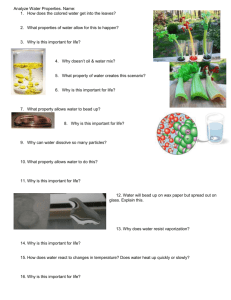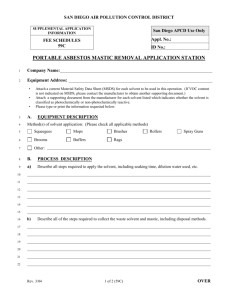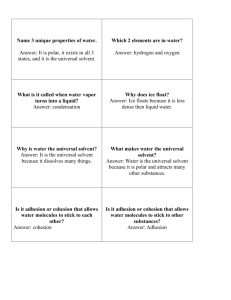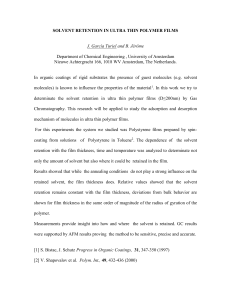Water & Acid Test Pre- Post Key with sources
advertisement
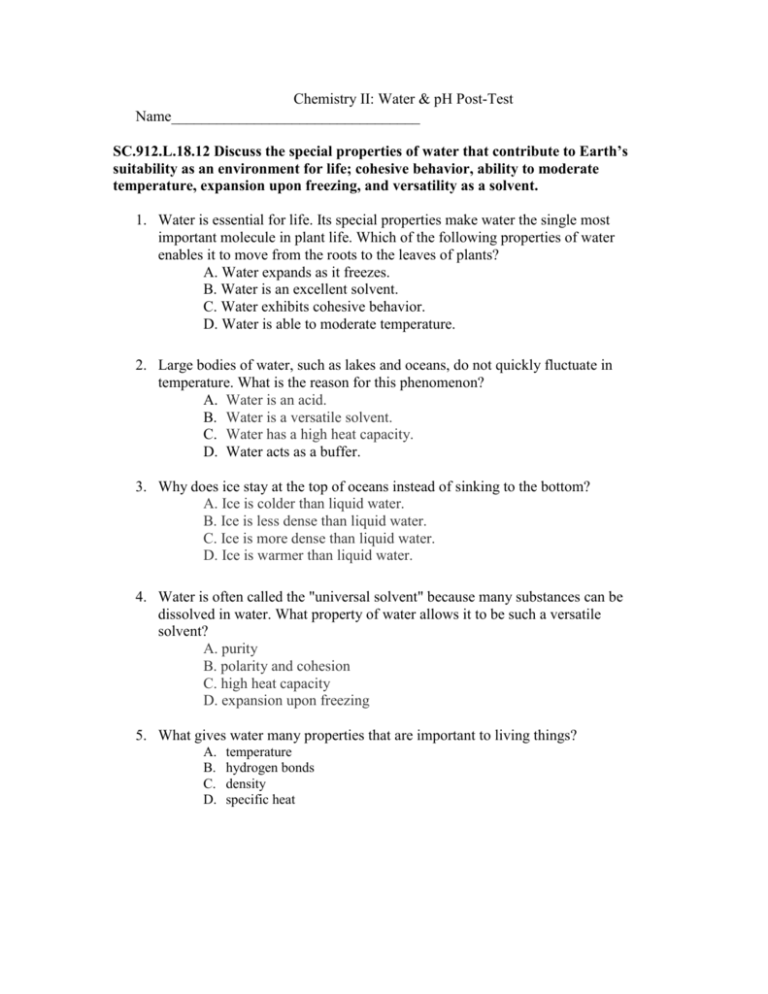
Chemistry II: Water & pH Post-Test Name_________________________________ SC.912.L.18.12 Discuss the special properties of water that contribute to Earth’s suitability as an environment for life; cohesive behavior, ability to moderate temperature, expansion upon freezing, and versatility as a solvent. 1. Water is essential for life. Its special properties make water the single most important molecule in plant life. Which of the following properties of water enables it to move from the roots to the leaves of plants? A. Water expands as it freezes. B. Water is an excellent solvent. C. Water exhibits cohesive behavior. D. Water is able to moderate temperature. 2. Large bodies of water, such as lakes and oceans, do not quickly fluctuate in temperature. What is the reason for this phenomenon? A. Water is an acid. B. Water is a versatile solvent. C. Water has a high heat capacity. D. Water acts as a buffer. 3. Why does ice stay at the top of oceans instead of sinking to the bottom? A. Ice is colder than liquid water. B. Ice is less dense than liquid water. C. Ice is more dense than liquid water. D. Ice is warmer than liquid water. 4. Water is often called the "universal solvent" because many substances can be dissolved in water. What property of water allows it to be such a versatile solvent? A. purity B. polarity and cohesion C. high heat capacity D. expansion upon freezing 5. What gives water many properties that are important to living things? A. B. C. D. temperature hydrogen bonds density specific heat 6. Which property of water is the result of hydrogen bonds? A. polarity of water molecules B. high specific heat C. low boiling point D. no cohesion among water molecules 7. Which substance represented in Figure 2.1 (A or B) is the solvent? A. B. C. D. both A and B substance A substance B neither A nor B 8. When salt is dissolved in water, water is the A. Reactant B. Solution C. Solute D. Solvent SC.912.P.8.11 Relate acidity and basicity to hydronium and hydroxyl ion concentration and pH. 9. Which of the following solutions has the highest H ion concentration? A. B. C. D. a solution with a pH of 1 a solution with a pH of 4 a solution with a pH of 7 a solution with a pH of 10 10. How does the addition of an acid affect a neutral solution? A. The pH is raised. B. The acid is neutralized. C. The ion concentration is increased. D. The solvent concentration is increased. 11. A solution with a pH of 3 is how many times more acidic than a solution which has a pH of 9? A. 6 B. 1,000 C. 100,000 D. 1,000,000 12. A substance with a pH of 6 is called A. An acid B. A base C. Both an acid and a base D. Neither an acid nor base.




